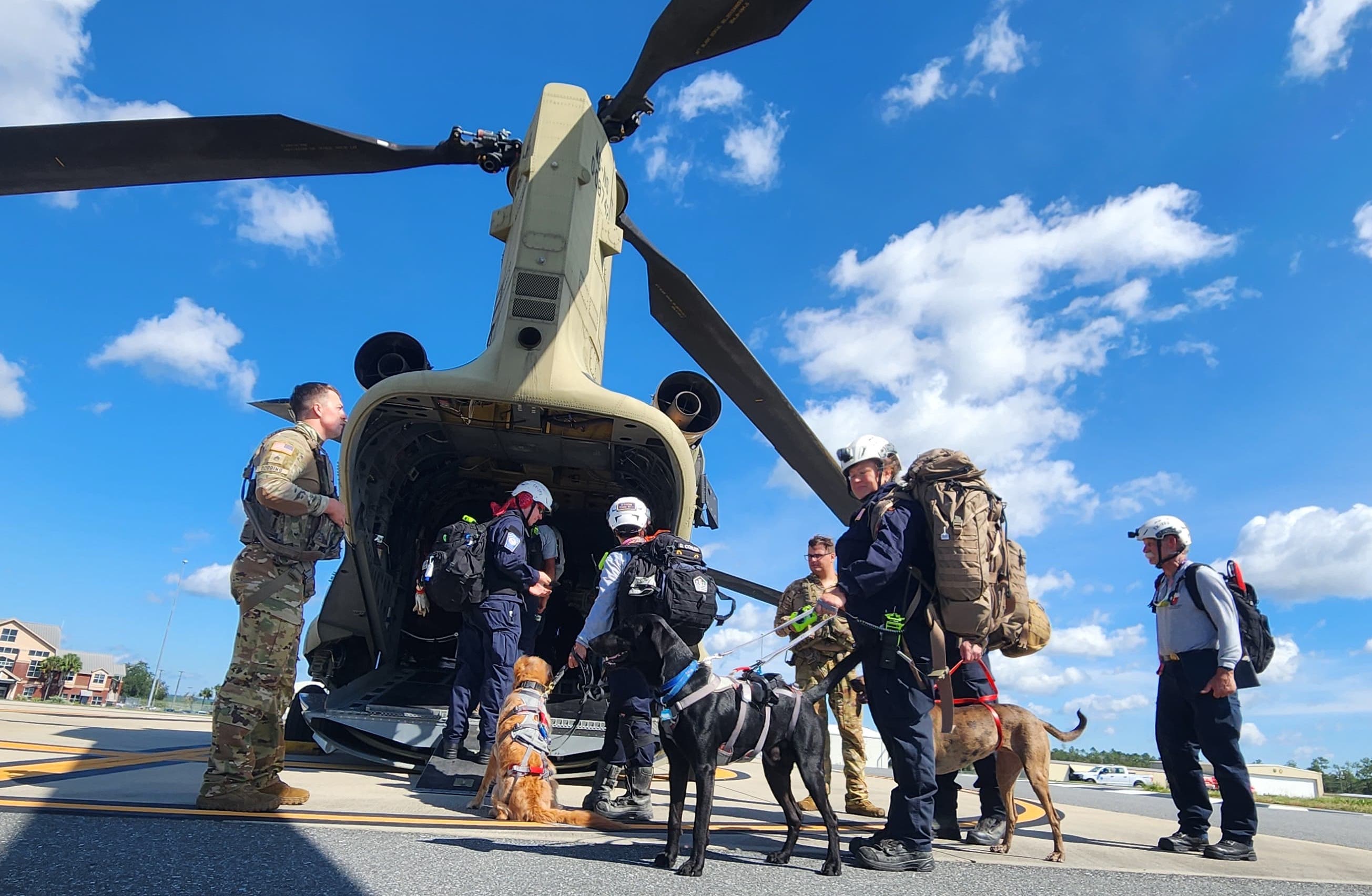
Along Hurricane Helene’s path of devastation, National Guard officials said they are hearing that some of their own soldiers have lost their homes but are still reporting to call-ups to support local response efforts.
“There’s at least two in the state that I know have lost everything,” said Army Col. Paul Hollenack, a commander in the North Carolina National Guard. “We’re providing services and taking care of them.”
One of the soldiers, Hollenack said, was from his own home unit, the 30th Armored Brigade Combat Team, and was a student at Appalachian State University in Boone, North Carolina. The Guard soldier “lost everything, drove to Durham to his unit, volunteered for state active duty, has been on state active duty supporting his community for the last two days,” Hollenack said.
Hollenack and Guard officials from three states spoke with reporters Thursday, a week after Helene made landfall on Sept. 26, to discuss how the states hit hardest have deployed guard support.
From the storm’s arrival, Guard troops have been on the go, commanders said. Troops flew utility crews to down cell towers where roads were impassable and evacuated 80 from a flooding hospital. One Tennessee unit even had to work just to get started after their armory was locked in by debris.
First rescues, then supplies
In the first hours after Helene rolled over parts of Georgia, North and South Carolina, and Tennessee Guard operations were centered around search and rescue. But in the days since, units have transitioned into clean-up and logistics, helping remove debris and with distributing aid, manning checkpoints and transporting emergency response workers.
“The demands continue to change. The first couple of days, search and rescue was almost primarily the only thing our aviation assets did,” Lt. Col. Meredith Richardson, Task Force 176 commander from the Tennessee National Guard said.
Army Maj. Gen. Win Burkett, director of operations for the National Guard Bureau
noted that the Guard typically trains with high water vehicles but there were limitations on using them for search and rescue missions safely.
“I wouldn’t say that it was worse than what people thought was possible,” Burkett said. “But I think you really don’t get a feel for it until you get out and that’s what makes every storm and every response unique.”

As of Thursday, nearly 6,700 Guard members from 16 states have been deployed across the southeastern U.S.
President Joe Biden ordered 1,000 active-duty troops from North Carolina to join the Guard in recovery and response efforts, but as of Thursday those troops had not left Fort Liberty, about a four hour drive from hard-hit Asheville. Pentagon spokesperson Sabrina Singh said they’re waiting on North Carolina and FEMA officials to tell them where to go and what to do.
Across the states, the Guard’s response includes more than 40 rotary-wing aircraft and nearly 600 military vehicles.
North Carolina Guard officials said they have split their fleet. Smaller helicopters are still focused on rescue and scouting damaged areas while medium and heavy lift helicopters worked on resupply “to get the biggest bang for the buck, get as much lifted as we can,” Hollenack said.
In Tennessee, one of the Guard’s first helicopter missions included evacuating patients from the roof of a hospital as waters flooded the entire first floor. Tennessee Guard aircraft and boat crews “showed up at that hospital and literally saved 80 plus people in that hospital,” Burkett said.
After that, crews spread out across the county to find stranded personnel and “picking people up that were floating on debris and out of trees.” Now most of their focus is on moving supplies, including bulk water distribution at shelters and medical facilities “as water has very quickly become a dire need across the communities,” Richardson said.
In South Carolina, Guard members were tasked with using aviation assets to transport communication personnel to fix damaged cell phone towers because the roads were closed.
Subscribe to Task & Purpose today. Get the latest military news and culture in your inbox daily.
“Our engineers literally had to cut themselves out of their own armories just to get roads so that they can make contact with those emergency operation centers and get a picture of what was going on initially,” said Army Col. William A. Matheny, Jr. commander of the 117th engineer brigade.
Some Guard members have been working since the storm’s onset which means units and personnel will have to be rotated out, Burkett said.
“They’re working around the clock very vigorously and where those states may start to lose some of that capacity, our team up here in support of the states will start looking at what we can do to augment them,” he said.
Burkett also said it’ll be up to the governors to determine when states can shift from life saving operations to recovery efforts, which the National Guard will have “a smaller role to play.”
